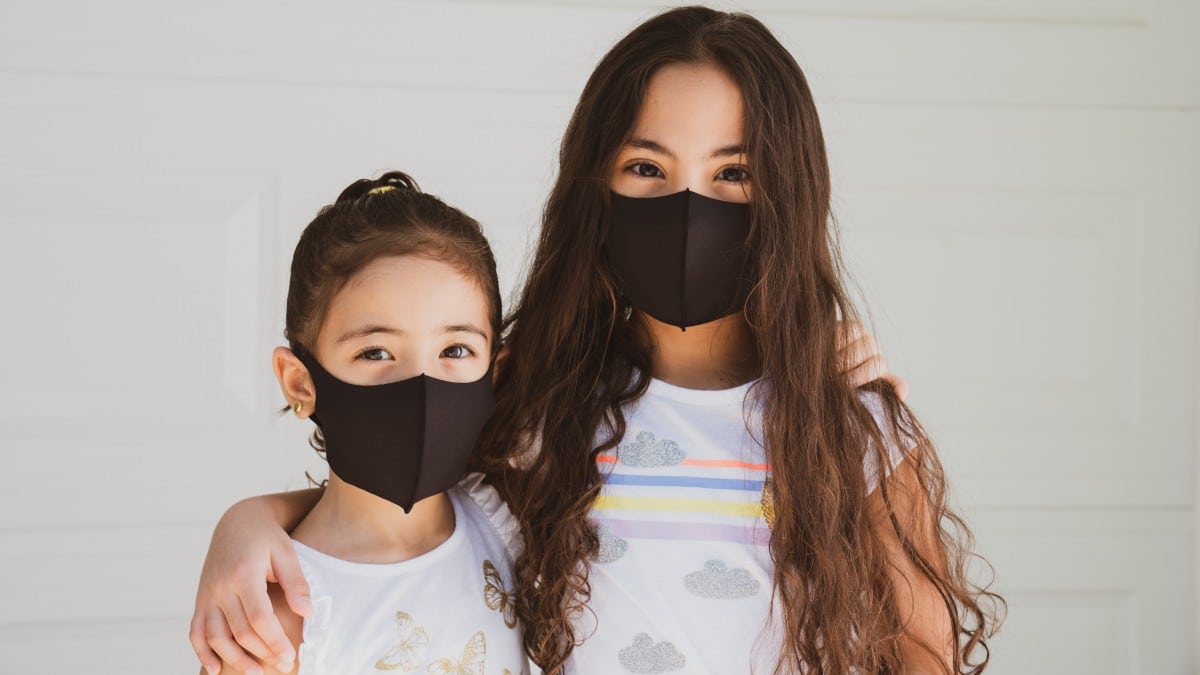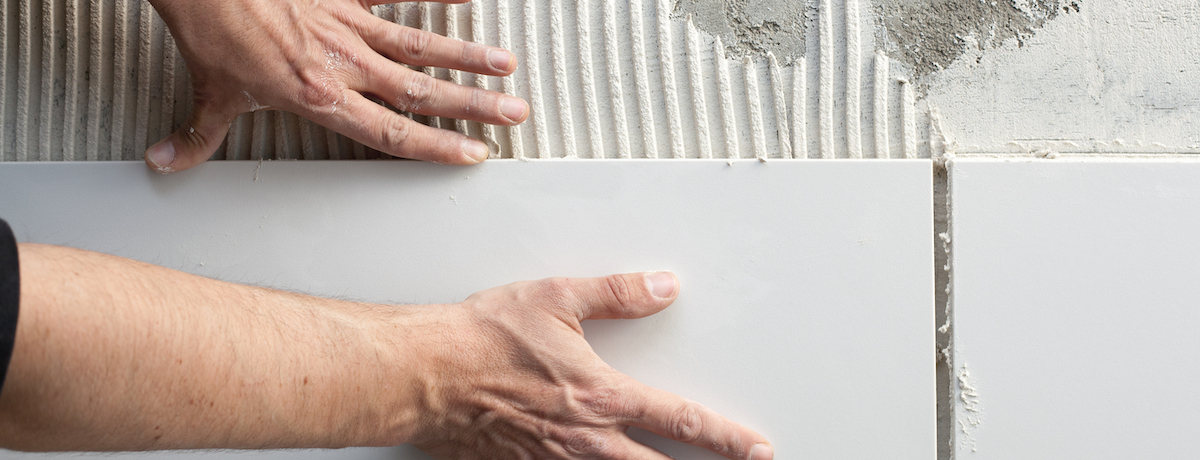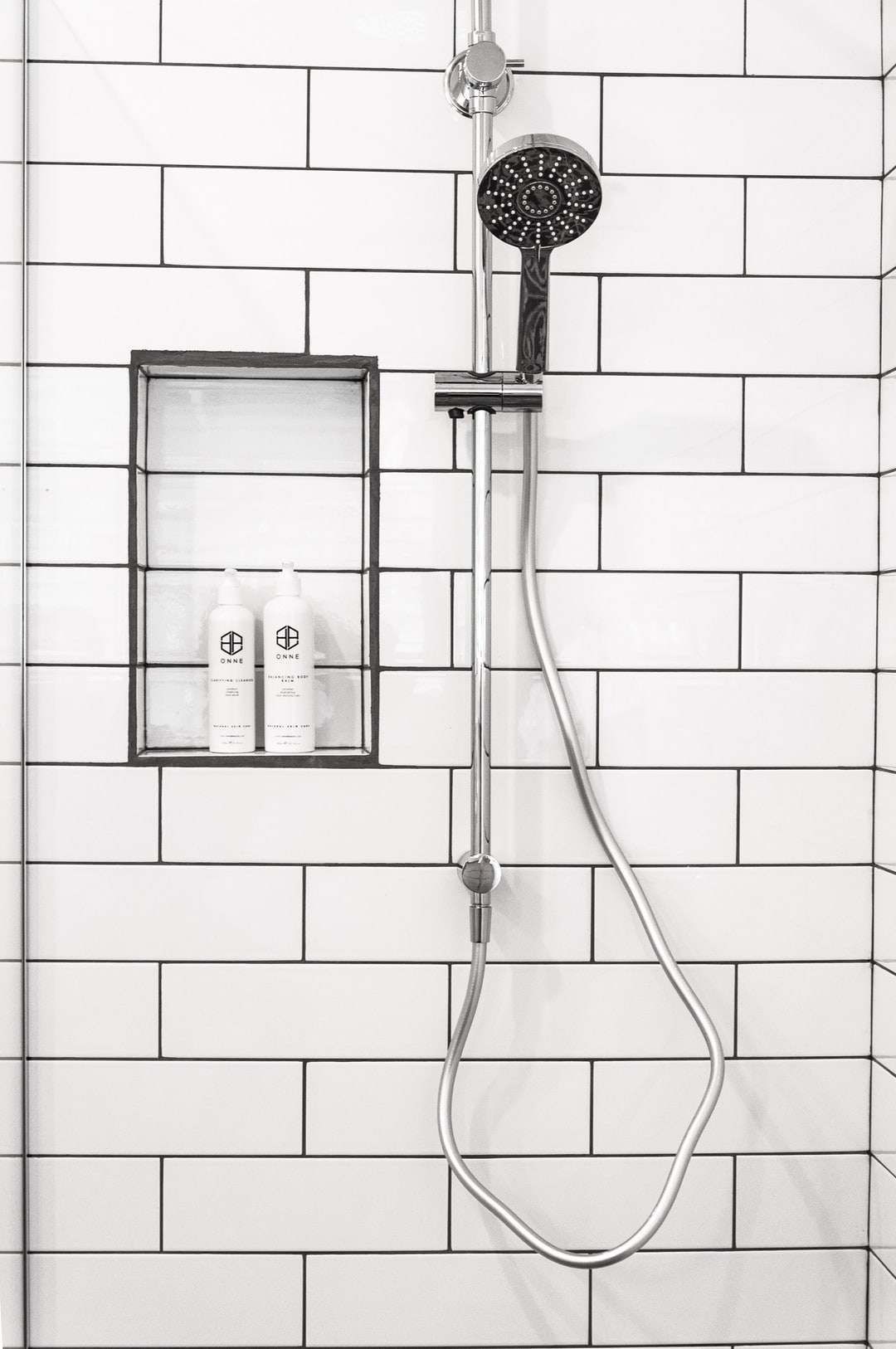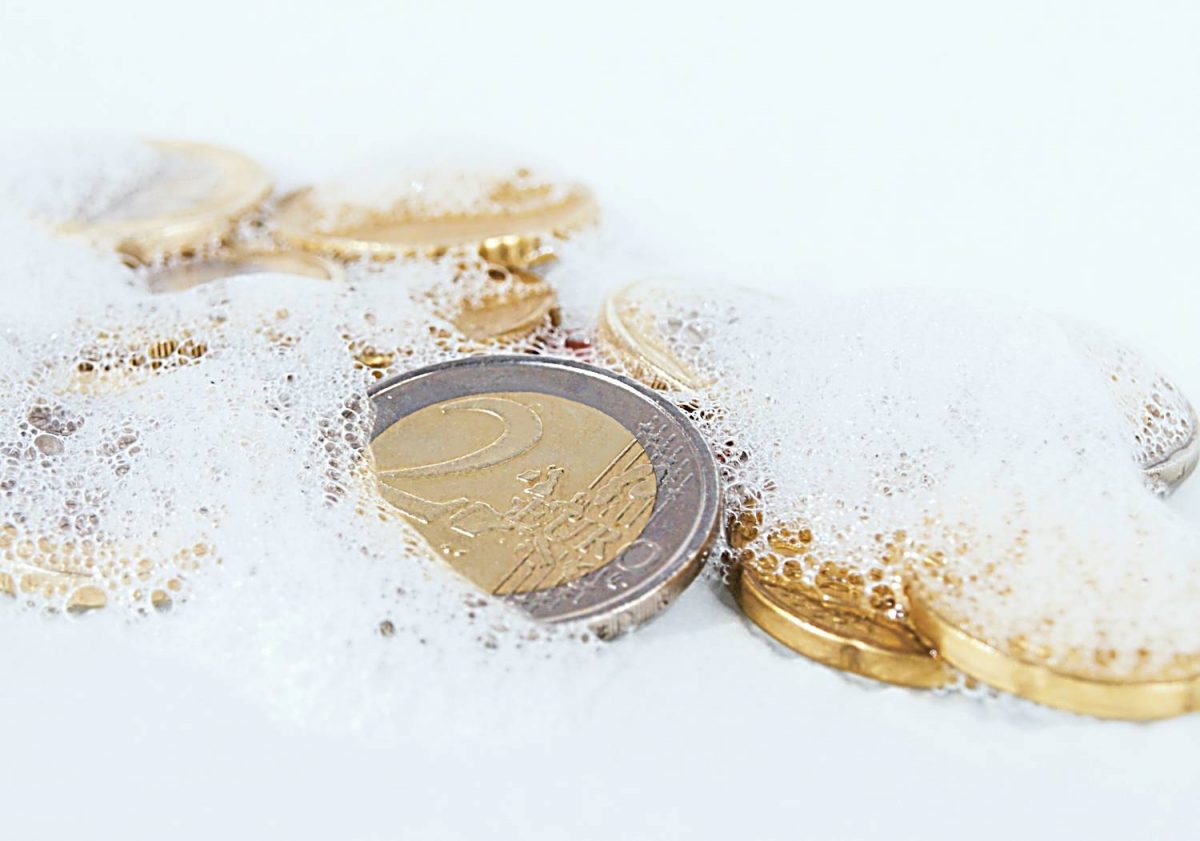Face masks have become a part of our daily lives, and masks are not going away any time soon. Mask mandates may be loosening in some places, but face masks are still required in some establishments. There’s also no telling if or when Covid-19 cases go up again.
That said, we might as well opt for economical and environment-friendly face masks for everyday use. You don’t want to keep spending money on disposable face masks. Disposable masks are also not great for the environment. National Geographic says 129 billion face masks are used every month globally. That’s around 3 million face masks per minute! Imagine tons of extra waste going to landfills and finding their way into the ocean.
The benefits of using a DIY fabric facemask
Fabric face masks not only save you money but also limit plastic waste. DIY face masks are also customizable to your fit and style. Store-bought fabric masks simply don’t always fit right. And ill-fitting masks are less effective in preventing the spread of viruses.
Here’s everything you need to know about face masks. Follow along and scroll through our step-by-step guide to making a DIY face mask. We listed down several methods, so you can pick one based on your skill level and preference.
3 ways to DIY easy face masks
You’re probably wondering, “What kind of DIY face mask should I use?” It depends on your sewing skills, so we’re giving you three methods for making a DIY fabric face mask. The first method is the easiest and fastest way to make a face mask—no sewing required! But if you’re looking to make a sturdier face mask, method #2 or #3 is the way to go.
Whether you have zero sewing skills or are a seasoned sewer, you’ll find some useful tips and ideas in this guide. Choose the method that works best for you, and have fun making your DIY face mask.
Where to get fabric for your face mask:
- Scrap fabric or old clothes around your home
- Etsy
- JOANN
- Michael’s
- Fabric.com
Easy DIY face masks method #1: No sewing

A t-shirt is all you need to quickly and easily make a face mask. If you have some old t-shirts in your closet, you can cut these up and repurpose them as face masks.
Just make sure not to use a shirt with holes or worn fabric. Ideally, you should choose a shirt with 100% cotton. The more opaque the fabric, the better.
Materials
- A t-shirt
- Scissors
- Optional: Coffee filter or paper towel
How to make a no-sew face mask with a t-shirt
- Measure – Measure your face from the top of your nose to underneath your chin. The usual length would be around 7-8 inches.
- Cut out the bottom of the shirt – Cut out the bottom part of your shirt to your measurement. You can cut more than you need and just trim the fabric later.
- Cut out a square into one side – Cut out a 6-inch square or elongated c-shape from one side. Then, cut the top and bottom strips in half to make ties for the mask.
- Try on the cloth – Put the cloth over your face and tie it around your head. Adjust the fit until it’s snug around your nose and chin. At this point, you can cut out any excess fabric.
- Optional – Place a coffee filter or paper towel inside the mask. Secure with a safety pin.
Alternative: Bandana face mask
If you prefer a no-sew, no-cut method, the bandana face mask is a great alternative. And you can make this face-covering in under 60 seconds!
Do keep in mind that this method won’t work on all types of bandanas or scarves. If it’s too thick, it won’t be breathable. If it’s too thin, it won’t provide enough protection. The best material to use is 100 percent, tightly woven fabric. Again, the more opaque, the better.
Materials
- A bandana or scarf
- Hair ties or rubber bands (2 pieces)
- Optional: A coffee filter or paper towel
How to make a bandana face mask
- Fold – Fold the bandana in half. Then, fold the top and bottom, so each side meets the middle.
- Insert the ties – Slide a hair tie onto each end of the bandana (i.e. left and right side). Then, fold the sides toward the middle. Tuck each side into each other if you can.
- Optional – Insert a coffee filter or paper towel into the cloth and secure it with a safety pin. Make sure to change the coffee filter or paper towel regularly.
Easy DIY face masks method #2: Sewing by hand
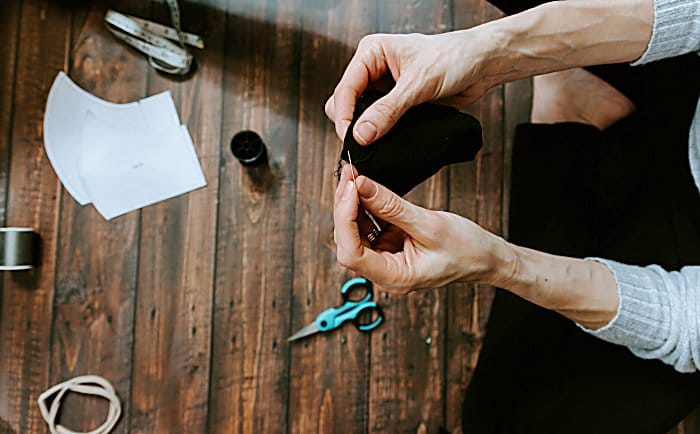
This pattern is for a slightly rounded mask. If you prefer the rectangular-type mask, you can skip right over to method #3.
Materials
- Cotton fabric (10-11 inches)
- Needle and thread
- Rubber bands or hair ties (2 pieces)
- A plate or something round for the template (10-12 inches in diameter)
- Scissors
- Pins
How to hand-sew a rounded mask
1. Make the base pattern.
- Place the plate on top of the fabric and draw around the plate.
- Cut out the fabric to get a circle.
- Fold the circle in half, then fold it again. You’ll end up with 4 rounded triangles, like a pizza with 4 slices.
- Cut out each shape, so you get 4 pieces of cloth.
2. Assemble the pieces.
- Place two shapes on top of each other. One shape should be facing up, while the other one is facing down (i.e. the correct sides are facing each other). Repeat for the other two shapes. After this step, you’ll have two pieces.
- Sew along the curved edges of each piece.
- Unfold your two triangles to get two dome-like pieces.
- Stack the two domes on top of each other.
- Pin your mask in place and sew around the edges. Leave a small gap on one end.
4. Turn the mask right side out.
- Pull the cloth through the small gap. Careful not to tear your fabric!
- Stitch up the small gap.
5. Insert the elastics
- Make a hem on both sides by folding each pointy edge over itself. Sew in place.
- Insert one elastic through each hem. Use a needle or safety pin to thread the elastic through the hem.
- Tie up the ends of the elastic. And there you have it!
Easy DIY face masks method #3: Using a sewing machine
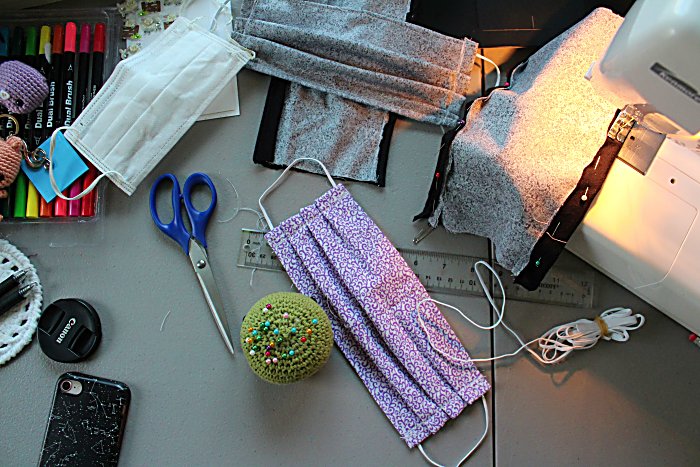
This method might seem a little daunting, but it’s actually easy if you take it one step at a time. If you don’t have a sewing machine, go ahead and sew this mask by hand. Now’s your chance to practice your running stitch!
Choose a fun pattern and sew to your heart’s content. These face masks also make great gifts you can give out to friends and family.
Materials
- Cotton fabric (around 15 x 8 inches)
- Elastic (2 pieces, 7 inches each)
- Sewing machine
- Needle and thread
- Scissors
- Pins
How to make a rectangular face mask using a sewing machine
- Make the base pattern.
- Cut your fabric to 15 inches by 8 inches.
- Fold the cloth in half.
- Draw 3-inch lines on the top and bottom edges of your fabric. Then, sew along these lines. The space between your marks will make a pocket for an optional filter.
- Insert the elastics.
- Move the seam to the center.
- Insert an elastic into each side (top and bottom) of the cloth.
- Pin each corner on each side of the mask to hold the elastic in place.
- Sew along the edges to close up the sides and secure the elastic.
- Make the pleats.
- Press the fabric to turn it right side out.
- Mark each side by placing pins 1 inch from the bottom. Keep placing pins all the way across. Space out the pins, following these measurements (bottom to top): 1″ – 1″ – 1/2″ – 1″ – 1/2″ – 1″
- Fold the fabric, lining up the pins on both sides.
- Sew along the edge on both sides to keep the pleats in place
If you want to master your sewing skills, you can book some online sewing lessons. But if you need several face masks made or want a professional touch, you can hire a seamstress instead.
How to make your face mask more effective
According to the World Health Organization, fabric masks should ideally have three layers of material. Three-layer fabric masks provide better filter efficiency than cotton masks with only one layer.
The WHO recommends this combination of materials for fabric face masks:
- Inner layer – Absorbent material, such as cotton, a cotton-polyester blend. Since the inner layer comes in direct contact with your face, this fabric should easily absorb droplets that you exhale. Choose a light color like white, so it’s easy for you to tell when your mask is soiled or wet. You can use a woven or knit cotton t-shirt. Make sure the fabric is breathable and comfortable.
- Middle layer – Non-absorbent material like polypropylene or other non-woven fabric. This fabric will act as the filter and go into a pocket between the inner and outer layers of your mask.
- Outer layer – Non-absorbent material like polyester, polyester blend, or polypropylene. The outer layer should be hydrophobic to repel droplets.
You can incorporate these materials into the DIY face masks we’ve listed above.
Frequently asked questions
How do I clean my reusable face mask?
Wash your reusable face mask every day or whenever it gets dirty. You can wash your face mask with a washing machine or by hand. When using a washing machine, you can include your mask with your regular laundry. Check the fabric label for the appropriate washing machine settings. When handwashing, use tap water, and laundry detergent or soap. Dry your mask in a warm or hot dryer. Otherwise, you can hang your mask under direct sunlight or lay it flat to let it dry.
How do I check if my face mask fits properly?
Make sure your face mask covers your nose, mouth, and chin. There should be no gaps above, below, or on the sides of your mask. Also, your mask should stay in place and not shift when you speak or move. Air shouldn’t pass through the edges of your mask to prevent the virus from getting in or out.
When should I wear a face mask?
Wear a face mask in areas where Covid-19 may be circulating. These areas include crowded places like malls, restaurants, schools, and public transport. If it’s impossible to stay 1 meter away from people, it’s best to wear a mask. You should also wear a mask in rooms with poor or unknown ventilation. The same goes for your home if you’re having visitors. When in doubt, wear a mask.
How do I properly wear and remove my mask?
Clean your hands before you have to touch your mask at any time. Wash or sanitize your hands before you put on or adjust your mask. You should also clean your hands after your touch your mask. When not wearing your mask, don’t wear it on your chin or around your wrist. Instead, keep your mask in a clean ziplock bag or plastic bag. Practice social distancing at all times even when wearing a mask.
Should I wear a mask while exercising?
No. You shouldn’t wear a mask while doing intense exercise. A face mask will limit your breathing capacity during such physical activities. Instead, stay at least 1 meter away from people while you exercise. Indoor areas should have enough ventilation. Better yet, limit your outdoor workouts and exercise in a spacious area in your home. You can hire a personal trainer who can coach you via Zoom and keep you on track with your fitness program.
The best DIY face masks are the ones you’ll use properly to protect yourself
Imperfect is better than nothing. It’s better to wear an imperfect mask than not wear a mask at all. So if your DIY face mask turns out less than perfect, wearing it when you go outside could still make a difference. For added protection, you can pair your DIY cloth mask with a disposable surgical mask underneath – note that you can’t really DIY medical face masks. (Here’s how to layer masks for additional protection!)
Should you need extra help or a volume of customized face masks for your company or loved ones, consider hiring an expert seamstress on our platform.
Additionally, your face mask will be most effective through proper use, storage, and cleaning. Don’t forget to practice social distancing and regularly disinfect your home, too! You can even hire a professional to deep-clean your sofa or carpet every once in a while.
Many things may feel out of our control nowadays, but practical solutions can alleviate your worries and keep you safe. With simple habits like wearing homemade masks, we can slow the spread of the coronavirus and get through this pandemic together.


